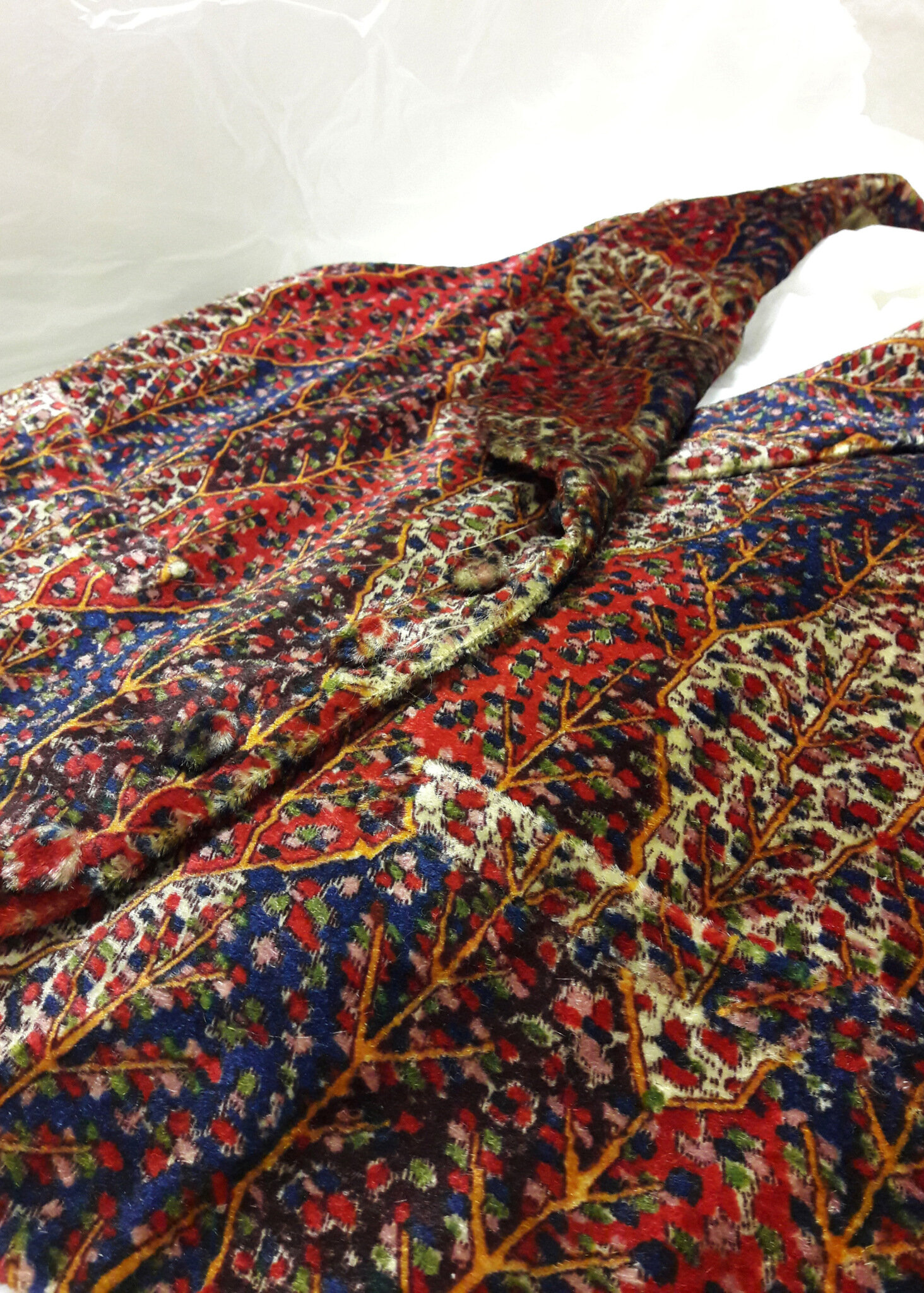
Hidden histories
A Piece by Elizabeth Turner, Look Again project Volunteer.
The importance of a fashion collection (and its display) is its ability to be uniquely human, the garments as fragile and temporal as the people who once inhabited them. There is no other department in any museum that quite reflects the interconnectedness of all things. I am always struck by how appropriate the iconic (if factually incorrect) Cerulean Sweater scene from The Devil Wears Prada is when we talk about fashion and the life of a garment.
A piece of clothing doesn’t just speak of the wearer; but their place in society, the hopes and aspirations of that society, technological developments, trade, artistic styles, politics, and history. Nothing exists in a vacuum.
Within any collection, there also exists a number of garments that represent the lives of those often overlooked. We have a substantial collection of agricultural smocks at Salisbury Museum, each one representing hours and hours of careful stitching. While they were almost exclusively worn by men, they were made by women.
Embroidery designs were passed down from mother to daughter, changed and elaborated on over time before being passed on again. Like many working-class people in rural England (my grandparents’ family included) their lives and likenesses were rarely documented. Worn for work but also cherished, there were also smocks for Sunday best, and wedding smocks. Those made for weddings, like some square cut shirts, and embroidered wedding waistcoats were not only a display of a fiancée’s needlework skill. The choice of decoration and the closeness to the wearer’s body also made them an intimate gift and akin to a love token.
For other garments, their significance is even greater. There are cotton petticoats with names inked in for whom I can find no records. The garment itself is now the only evidence that they ever existed. Folk practises like the concealing of shoes give us a glimpse into the lives of people who lived in our historic buildings. The shoes are often a wonderfully preserved record of the changing fortunes of a piece of clothing.
One of my favourite items is an early Victorian waistcoat. We know nothing of the original owner, but I love that what we do have is a delightful record of how one young man saw himself. We do however know the waistcoat came from William Norman, a gentlemen’s outfitter of 15 Queen Street in Hull, East Yorkshire. The deep shawl collar and pointed front waist date it to around 1845-55.
Made from an unusual printed velvet in a rich array of colours and Persian carpet motifs, it hints at Romantic era exoticism and perhaps aspirations of artistic sensibility. Although items like this often give us more questions than they answer I like to imagine that its former owner was as flamboyant and charismatic as his waistcoat.
There are a wealth of stories bound up in the garments we care for, often as strange and varied as our own. Fashion collections have the unique ability to humanise the past, bringing people to life in a way we can all relate to and understand.
After all, what could be more accessible and universal than the clothes we wear every day?
Early Victorian Waistcoat ©The Salisbury Museum collection
Early Victorian Waistcoat button detail ©The Salisbury Museum collection



